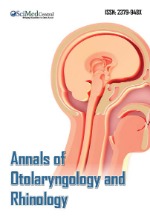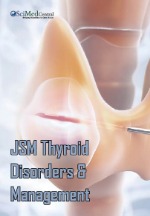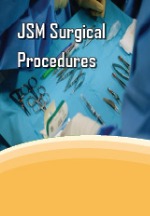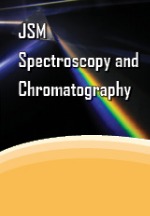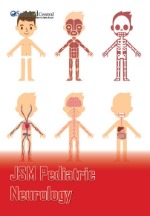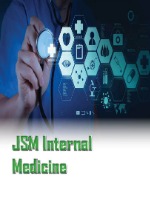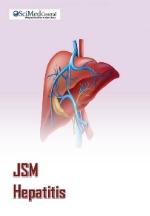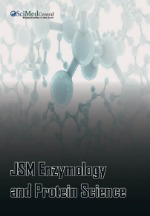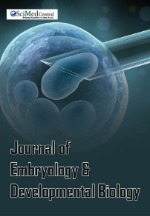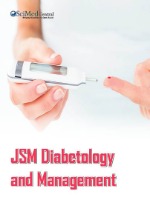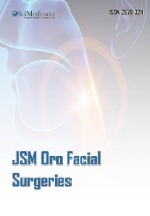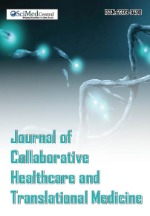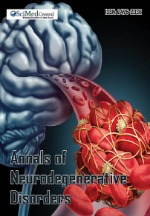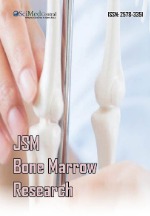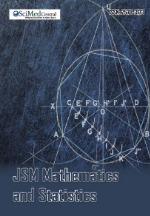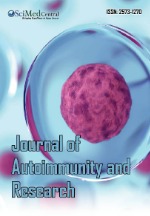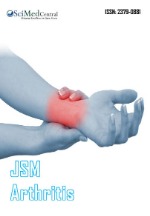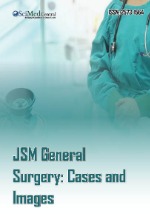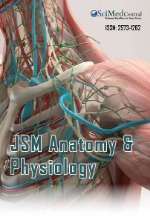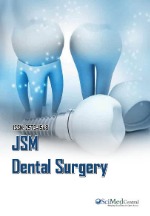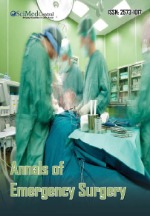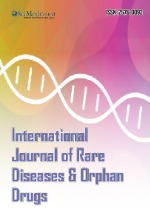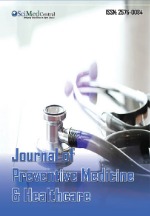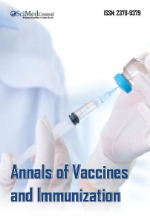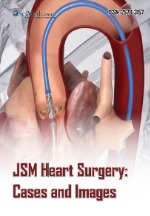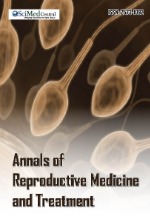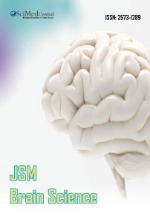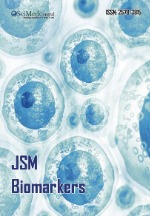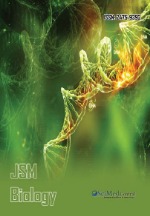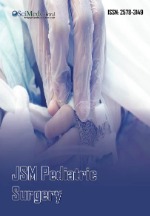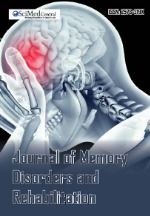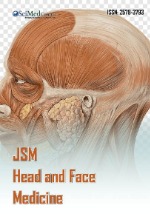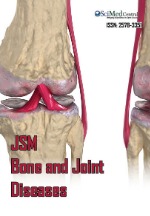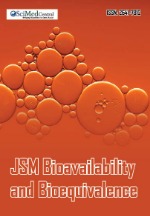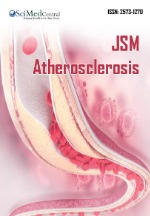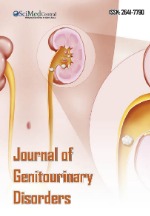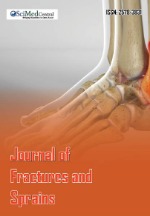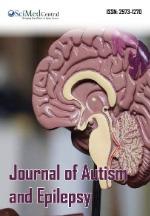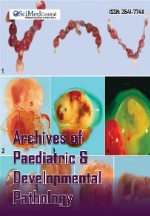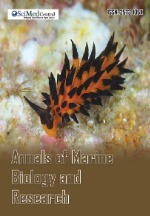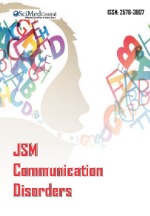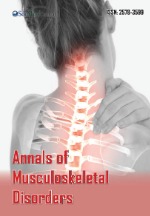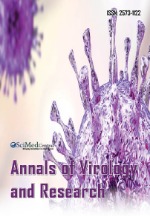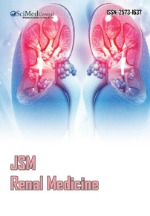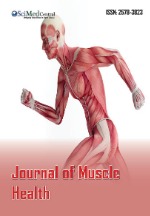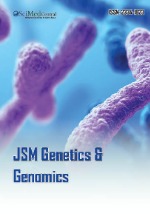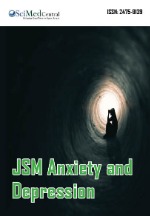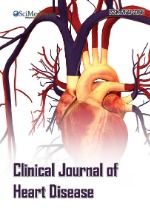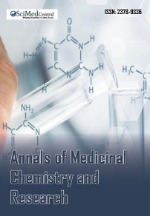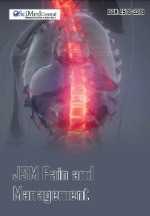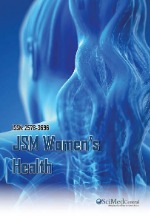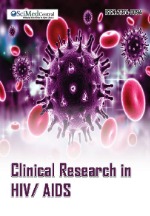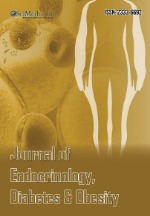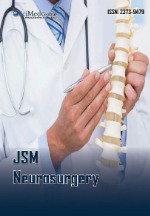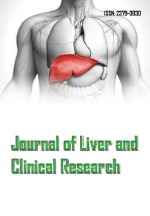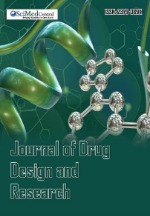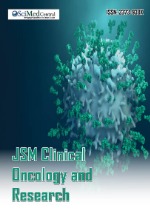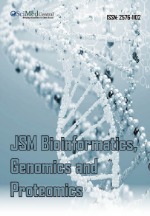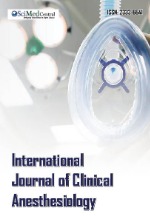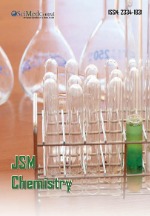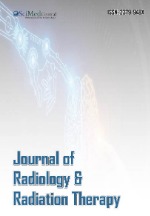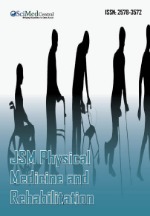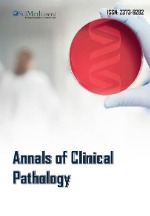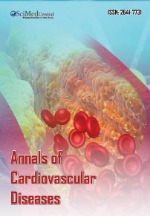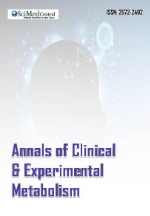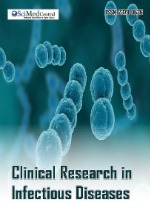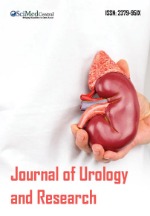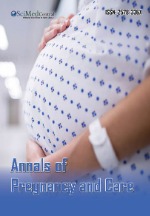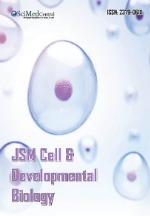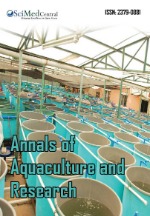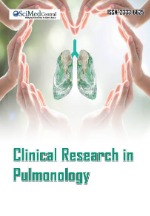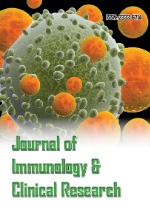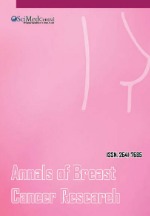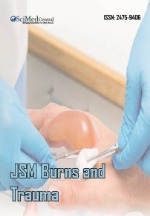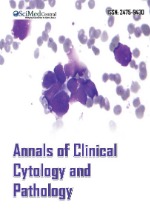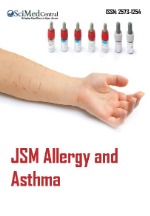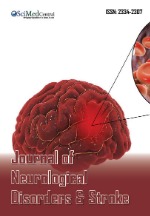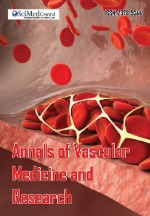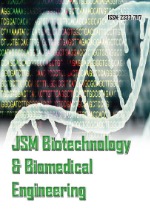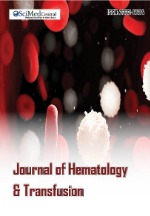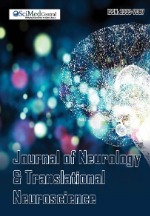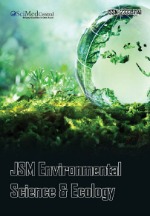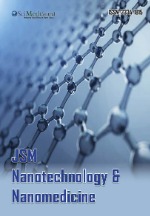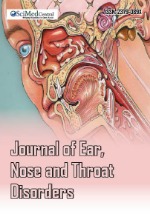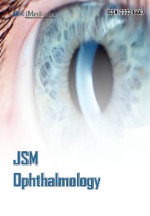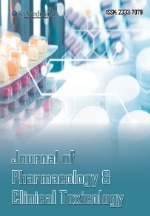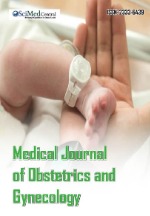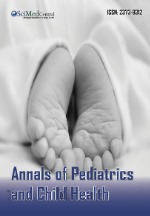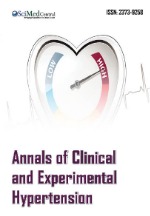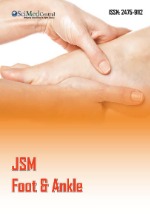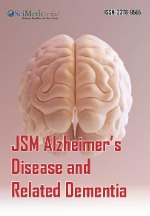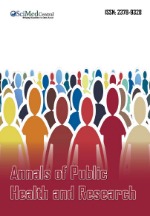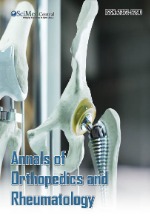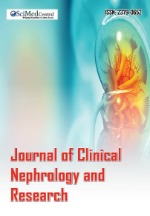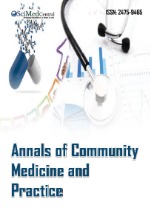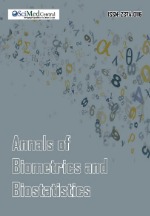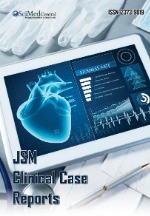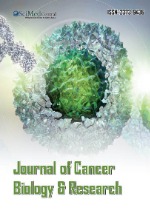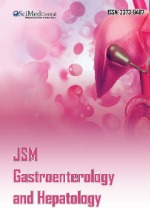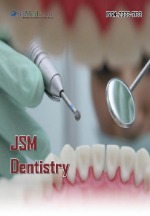PCI for unprotected Left Main stenosis employing the OCTOBER Trial approach in an all-comers cohort
- 1. University Hospital Schleswig-Holstein, Medical Clinic II, University Heart Center Lübeck, Germany
- 2. German Center for Cardiovascular Research (DZHK), Partner Site Hamburg-Kiel Lübeck, Germany
- 3. Asklepios Klinik Altona, Department of Cardiology, Germany
- 4. Cardiologicum Hamburg, Germany
Abstract
Background: The randomized OCTOBER trial finds the use of invasive imaging by optical coherence tomography (OCT), lesion preparation via scoring balloon and provisional T-stenting as the default PCI strategy in bifurcation lesions including left main (LM) disease to improve outcomes. Clinical results of this approach in routine practice are not yet known.
Aim / Objective: The study investigated safety and efficacy of the OCTOBER study approach in routine, elective unprotected LM PCI.
Methods and Results: From 2015 the group adopted a treatment strategy for LM disease favoring OCT-guided PCI preferentially performed with a one-stent technique including lesion preparation by a nitinol based scoring balloon. Over a 5.5-year period, elective, unprotected LM PCI was performed in 123 consecutive patients. 90 (73.2%), patients received lesion preparation by scoring balloon.
OCT imaging was employed in 34 (27.6%), 106 (86.2%), patients were treated with a provisional T-stenting strategy. Clinical endpoints were available up to 6 years with a mean follow-up of 2.3 years. Major adverse cardiovascular and cerebrovascular events (MACCE), were observed in 26.8% patients. Target lesion revascularisation (TLR), and target vessel revascularisation (TVR), rates were observed at 4.1% and 5.7%, respectively. In this elderly population with a mean age of 72.9 years, overall mortality was 12.2% with 5.7% classified as cardiovascular mortality.
Conclusion: This registry finds modified unprotected LM PCI incorporating OCT guiding, lesion preparation and default provisional T-stenting to be associated with low rates of myocardial infarct and CV mortality over a mean follow-up of 2.3 years until a first clinical endpoint occurred.
KEYWORDS
- Unprotected left main intervention
- Bifurcation lesion
- Lesion preparation
- Provisional stenting
- Optical coherence tomography
- OCT
CITATION
Genske F, Schmidt T, Bergmann MW (2025) PCI for unprotected Left Main stenosis employing the OCTOBER Trial approach in an all-comers cohort. J Cardiol Clin Res. 13(1): 1207.
ABBREVIATIONS
ALD: Average Lumen Diameter; ASB: Angiosculpt Scoring Balloon; BMI: Body Mass Index; CABG: Coronary Artery Bypass Grafting; CAD: Coronary Artery Disease; cMRI: Cardiac Magnetic Resonance Imaging; DES: Drug Eluting Stent; GFR: Glomerular Filtration Rate; HFrEF: Heart Failure With Reduced Ejection Fraction; HFmrEF: Heart Failure With Mildly Reduced Ejection Fraction; IVUS: Intravascular Ultrasound; KBT: Kissing Balloon Technique; LAD: Left Anterior Descending (Coronary Artery); LCx: Left Circumflex (Coronary Artery); LMCA: Left Main Coronary Artery; LV-EF: Left Ventricular Ejection Fraction; MI: Myocardial Infarction; MV: Main Vessel; NSTEMI: Non ST- Segment Myocardial Infarction; OCT: Optical Coherence Tomography; PCI: Percutaneous Coronary Intervention; POT: Proximal Optimization Technique; RCA: Right Coronary Artery; SB: Side Branch; SPECT: Single Photon Emission Computer Tomography; STEMI ST: Segment Myocardial Infarction; ULMI: Unprotected Left Main Intervention.
INTRODUCTION
Coronary artery disease (CAD) involving the left main coronary artery (LM) has a higher mortality than CAD of other coronary arteries [1]. Available evidence from large randomized controlled trials (RCTs) between PCI and CABG such as EXCEL and NOBLE suggest equivalent safety regarding the endpoints death, stroke and myocardial infarction (MI) [2-4]. Both approaches have a class Ia recommendation for LMCA disease with a syntax score ≤22; in the new 2024 ESC guidelines PCI is recommended with a IIa level A in all patients, where equivalent completeness of revascularization can be achieved compared to CABG given the lower invasiveness and non- inferior surivival [3,5]. The 2023 AHA/ACA guidelines on chronic coronary syndrome give left main PCI a 2a level B-NR recommendation if an equivalent revascularization can be achieved compared to CABG [6].
Intracoronary optical coherence tomography (OCT) allows for high-resolution intravascular imaging of the vessel wall, characterization of plaque morphology, 3D reconstruction to assess position of the rewired side- branch and assessment of stent strut apposition to the vessel wall [7,8]. The current ESC/EATCS guidelines on myocardial revascularization suggest OCT for PCI as a class IIa, level B recommendation [3]. Furthermore, the recently published OCTOBER trial on treatment of complex bifurcation lesions, which included a total of 1201 patients, of which 227 (18.9%), had LM-CAD, found OCT guided PCI superior to angiography guided PCI [9].
The ALSTER Left Main 2024 registry study is a follow- up to the previously published study from 2016. The ALSTER Left Main 2016 with > 90% of interventions performed with the provisional T-Stenting technique found the AngioSculpt Scoring Balloon to be safe and feasible for lesion preparation; patients had a numerically larger lumen gain compared to left main PCI w/o scoring balloon [10]. According to the local heart team consensus from 2015, PCI for left main stenosis was performed in all patients with 2-vessel disease regardless of SYNTAX score and in patients with 3-vessel disease but a SYNTAX score ≤ 22 [11,10].The employed indication and strategy anticipated the recommendations of the German Cardiac Society published in 2019 following the ESC and EACTS guidelines on myocardial revascularization from 2018 [11].
The group adopted a PCI strategy identical to the OCTOBER study protocol back in 2014; lesion preparation with a scoring balloon and provisional T-stenting as the default stent strategy as well as OCT imaging during routine PCI was performed at the discretion of the operator but endorsed. The local consensus encouraged OCT imaging for lesion assessment of stenosis, stent size selection and assessment of strut apposition and strut passage following side-branch rewiring. Impella mechanical support was available to the operator for cost effectiveness.
In total 123 consecutive unprotected LM PCI patients were followed up to their first clinical endpoint. The operators opted for OCT-guided PCI in 34 patients (27.6%). Lesion preparation with the nitinol-wire based
AngioSculpt scoring balloon was performed in 90 (73.2%) patients, 106 (86.2%) patients received LM PCI employing the provisional T-stenting technique. Clinical outcomes of LM PCI employing OCT-guiding, scoring balloon and a preferred one-stent technique up to 5,5years follow-up with a mean follow-up of 2.2 years are reported in this manuscript.
METHODS
Patient selection
The ALSTER Left Main 2024 registry retrospectively identified 186 patients that received LM PCI between June 2014 and December 2019 out of a prospective, standardized, local registry that included all invasively diagnosed patients during that time frame. PCI for left main stenosis was performed according to the local heart team consensus in accordance with the recommendations of the German Cardiac Society published in 2019 following the ESC and EACTS guidelines on myocardial revascularization from 2018 [4,11].
In brief, PCI for left main stenosis was regarded indicated if patients presented with any of the following criteria:
- Patient fragile or
- Patient > 80 years or
- Patient choice / refusal of CABG or
- SYNTAX score of 0-22 or
- No 3-vessel disease (RCA without ischemia or transmural scar in SPECT or cMRI) or
- Renal failure GFR < 30ml/min or
- Left ventricular ejection fraction (LV-EF) < 30%
In the case of three-vessel disease, diabetic patients of less than 80 years were strongly advised to opt for CABG if not any of the other criteria mentioned above suggested PCI to be the individually preferred strategy (Figure 1).
Figure 1: Flow-chart depicting the local heart team algorithm for the ALSTER left main registry 2024.
Invasive imaging employing OCT at the discretion of the operator was encouraged for distal or shaft left main stenosis, IVUS was not available during that time frame for cost effectiveness regarding maintenance of several imaging devices. OCT employing the OPTIS system (Abbott) including 3D imaging was performed at three predefined stages of the procedure (Figure 2).
Figure 2: Key steps of OCT guided left main PCI extracted from the OCTOBER trial protocol.
Pullback A: Analysis of luminal cross-sectional area and proximal and distal landing zone; stent size derived from upsizing distal mean lumen diameter by one stent size.
Pullback B: Assessment of re-wiring: following angiography-guided lesion preparation by scoring ballon, stent placement and POT with luminal area upsized by one balloon diameter (i.e. 4.5mm balloon for 4.2mm luminal area to achieve optimal strut apposition), re-wiring of the side branch wire position is assessed by 3D reconstruction: distal strut passage?
Pullback C: Following kissing ballon (balloon size: distal lumen diameter minus -0,5mm) and optional 2. POT OCT imaging is employed to assess
strut apposition, stent expansion and to exclude possible proximal/distal intima dissection
Pullback A: Analysis of luminal cross-sectional area
Proximal and distal landing zone were measured;
stent size was derived by upsizing the distal lumen mean diameter by one stent size, i.e. average lumen diameter (ALD) 2.6mm – stent diameter 2.75mm; 2.8mm ALD – 3.0mm DES, 3.2mm ALD – 3.5 mm DES, 3.6mm ALD – 4.00
DES. The default drug-eluting stent during the whole study period was the DES XIENCE PRO.
Pullback B: Assessment of wire crossing by 3D imaging
Following lesion preparation by scoring ballon (AngioSculpt: nitinol wire covered balloon), stent placement, POT (proximal optimization technique; balloon size for POT according to previous assessment of proximal average lumen diameter) and re-wiring of the side-branch prior to a Kissing Balloon maneuver OCT was used to assess the strut which the sidebranch wire had crossed. In addition, a first OCT-assessment of strut apposition was performed at this stage. Strut apposition was regarded sufficient if the distance between the strut and the vessel wall was < 300µm.
Pullback C: Final assessment of strut apposition, decision on 2nd POT
Following kissing balloon in cases of bifurcation stenting (balloon size: distal average lumen diameter minus 0,5mm) and optional second POT balloon dilatation, OCT imaging was employed to assess strut apposition, stent expansion and to exclude relevant proximal or distal dissection. In case of remaining stenosis of the left anterior descending (LAD) or the left circumflex (LCx) coronary artery, stent expansion of > 80% in comparison to the distal diameter of the vessel was regarded sufficient.
Out of 186 patients that received LM PCI, 35 were excluded from this analysis for protected LM PCI defined as presence of a patent coronary artery bypass graft to either LAD or LCx. 21 patientes were excluded because they presented with STEMI (Troponin, CK-MB) indicative of ongoing infarction or cardiogenic shock. A further 7 patients were excluded, 4 of which had restenosis of a LM lesion treated prior to 2015. Finally, 123 patients with primary, elective unprotected left main intervention (LM PCI) were included in the analysis (Figure 1).
Bifurcation lesions were classified using the Medina- classification [12]. A true bifurcation lesion was defined as Medina 1,1,1; 1,x,1 or x,1,1. Other lesions were either non- true bifurcation lesions or ostial/shaft lesions. The medina classification does not take calcification, bifurcation angle, lesion length and other criteria into account.
Data collection, follow-up, and statistical analysis
Data were collected through a retrospective analysis of the consecutive angiography and PCI documentation system at our centre employed to create all angiography reports. All patients had regular appointments in our outpatient general cardiology clinic which allowed for follow up assessments until the first clinical event. A substantial proportion of the patients were followed for 5 years. Continuous data were described as mean and standard error of the mean (SEM). P<0,05 was considered significant for all tests. GraphPad PRISM (GraphPad Software Inc., San Diego, CA, USA) was used to create Kaplan-Meier-curves.
Clinical outcome data
Outcome data were collected regarding overall and cardiovascular mortality, stroke, myocardial infarction, target lesion and target vessels revascularization (TLR and TVR, respectively). Major adverse cardiovascular and cerebrovascular events (MACCE) was defined as overall and cardiovascular mortality, myocardial infarction, stroke, and revascularization.
Follow-up was retrospectively performed during the time the study was conducted until June 1st, 2021. Follow- up was conducted by retrospective chart-review and by telephone interview of the patient and/or the patients’ general practitioner, if the patient consented. Follow-up time periods were grouped into < 1 year, 1-3 years, 3-5 years, and > 5 years. Routine follow-up angiography was not performed.
RESULTS
Baseline characteristics are displayed in Table 1.
Table 1: Table shows the baseline characteristics of all patients. Results are displayed as total numbers and standard error of the mean (SEM) or percentages. (BMI = body mass index, kg = kilograms, cm = centimeters).
|
|
Alster left main registry (n = 123) |
|
|
Age |
72.9 (±0.93) |
|
|
|
≥67 years |
92 (75.4%) |
|
|
<67 years |
30 (24.6%) |
|
Sex |
|
|
|
|
male |
88 (71.5%) |
|
|
female |
35 (28.5%) |
|
BMI |
27.8 (±0.57) |
|
|
|
weight (kg) |
82.1 |
|
|
height (cm) |
171.2 |
|
Diabetes mellitus |
|
|
|
yes |
|
42 (34.1%) |
|
no |
|
81 (65.9%) |
|
Arterial hypertension |
|
|
|
yes |
|
104 (84.6%) |
|
no |
|
19 (15.4%) |
|
Nicotine-consumption |
|
|
|
yes |
|
37 (30.1%) |
|
no |
|
86 (69.9%) |
|
Familial predisposition |
|
|
|
yes |
|
20 (16.3%) |
|
no |
|
103 (83.7%) |
|
Hyperlipoproteinemia |
|
|
|
yes |
|
95 (77.2%) |
|
no |
|
28 (22.8%) |
|
LVEF (n = 104) |
|
|
|
HFpEF |
|
74 (71.2%) |
|
HFmrEF |
|
13 (12.5%) |
|
HFrEF |
|
17 (16.3%) |
|
Chronic kidney failure (n=95) |
|
|
|
KDIGO 1 |
|
17 (17.9%) |
|
KDIGO 2 |
|
42 (44.2%) |
|
KDIGO 3 |
|
30 (31.5%) |
|
KDIGO 4 |
|
3 (3.2%) |
|
KDIGO 5 |
|
3 (3.2%) |
|
NYHA (n = 93) |
|
|
|
1 |
|
8 (8.6%) |
|
2 |
|
48 (51.6%) |
|
3 |
|
31 (33.3%) |
|
4 |
|
6 (6.5%) |
|
X-vessel CAD |
|
|
|
1 (ostial LAD or Cx) |
|
4 (3.3%) |
|
2 |
|
50 (40.6%) |
|
3 |
|
69 (56.1%) |
|
Symptoms at admittance |
|
|
|
(n = 115) |
|
|
|
NSTEMI |
|
30 (26.1%) |
|
stable angina |
|
58 (50.4%) |
|
unstable angina |
|
27 (23.5%) |
|
Pharmacotherapy (n = 120) |
|
|
|
Statins |
|
108 (90.0%) |
|
ASS |
|
104 (86.7%) |
|
P2Y12 inhibitors |
|
119 (99.2%) |
|
DOACs |
|
19 (15.8%) |
|
Beta blockers |
|
88 (74.6%) |
Mean age was 72.9 years, mean body mass index (BMI) was 27.8 kg/m2 and 88 (71.5%) patients were male. Most patients were screened positive for cardiovascular risk factors. Diabetes mellitus was present in 42 patients (24.1%), 104 patients (84.6%) had arterial hypertension, hyperlipoproteinemia was reported for 95 patients (77.2%). Family predisposition for CAD was present in 20 patients (16.3%) and 37 patients (30.1%) were current or former smokers. The LV-EF, measured by echocardiography, was ≥50% for 71.2% of the patient population. Heart failure with mildly reduced ejection fraction (HFmrEF, EF 40-50%) was reported for 12.5% and heart failure with reduced ejection fraction (HFrEF, EF < 40%), was seen in 16.3%. The most common presentation was instable angina (50.4%). NSTEMI was diagnosed in 26.1%. During coronary angiography 56.1% were found to have 3-vessel disease.
While OCT was only used in a minority of cases, the imaging also influenced the stent strategy of the non-OCT imaging patient cohort: The average main vessel stent diameter did not differ whether OCT was used or not (3.4mm vs. 3.4mm). Out of the 123 patients, 106 patients (86.2%) were treated using a provisional T-stenting strategy. In 90 cases (73.2%) lesion preparation with an AngioSculpt scoring balloon was performed. Scoring balloon size was chosen to be 0.5mm smaller than the diameter of the landing zone to prevent dissection of the distal vessel. Overall, 78 patients (63.4%) were treated with both, lesion preparation and a provisional T-stenting.
Lesion assessment according to the Medina classification showed that 32 patients (26%) presented with true bifurcation lesions (Medina 1,1,1; 1,x,1 or x,1,1). Non-true bifurcation lesions were identified in 71 cases (57.8%) and 20 patients (16.2%) had lesions only involving the ostium or shaft of the LMCA. Out of the 32 patients with true bifurcation lesion, 87.5% were treated with a primary provisional T-stent strategy as the side branch diameter was ≤ 2.5mm and/or pretreatment with a drug-coated balloon resulted in sufficient lumen gain w/o flow-limiting dissection. All of the 71 patients with non-true bifurcation lesions were treated with a primary provisional T-stent strategy.
The XIENCE PRO was the standard drug-eluting stent during the time the study was conducted;
Interventionalists were encouraged to use POT and kissing balloon technique (KBT) for bifurcation lesions (Table 2).
Table 2: Table shows the procedural data of the registry. Results are displayed as total numbers and standard error of the mean (SEM) or percentages. (BMI = body mass index, kg = kilograms, cm = centimeters).
|
|
ALSTER left main registry (n = 123) |
|
Scoring Balloon |
|
|
yes |
90 (73.2%) |
|
No |
33 (26.8%) |
|
Provisional T Stenting |
|
|
yes |
106 (86.2%) |
|
No |
17 (13.8%) |
|
Size Scoring Balloon |
|
|
diameter (mm) |
3.0 (±0.03) |
|
2.5 |
19 (21.1%) |
|
2.75 |
1 (1.1%) |
|
3 |
58 (64.5%) |
|
3.5 |
12 (13.3%) |
|
length (mm) |
13.8 (±0.22) |
|
8 |
1 (1.1%) |
|
10 |
18 (20.0%) |
|
13 |
1 (1.1%) |
|
15 |
2 (2.2%) |
|
pressure (bar) |
68 (75.6%) |
|
12 |
14.2 (±0.12) |
|
14 |
2 (2.2%) |
|
16 |
1 (1.1%) |
|
18 |
80 (88.9%) |
|
22 |
4 (4.5%) |
|
Stent (n = 122) |
|
|
Abbot Xience Pro |
85 (69.7%) |
|
Medtronic Resolute Integrity |
30 (24.6%) |
|
Medtronic Resolute Onyx |
3 (2.5%) |
|
Medtronic Resolute Endeavour |
1 (0.8%) |
|
Boston Scientific Emerge |
1 (0.8%) |
|
Biomatrix BioMatrix Flex |
2 (1.6%) |
|
Largest stent used |
|
|
diameter (mm) |
3.5 (±0.04) |
|
2.25 |
1 (0.8%) |
|
2.5 |
4 (3.3%) |
|
2.75 |
2 (1.6%) |
|
3 |
26 (21.1%) |
|
3.5 |
60 (48.8%) |
|
4 |
25 (20.3%) |
|
4.5 |
3 (2.5%) |
|
5 |
2 (1.6%) |
|
length (mm) |
15.1 (±0.42) |
|
8 |
13 (10.6%) |
|
9 |
10 (8.1%) |
|
12 |
19 (15.5%) |
|
14 |
2 (1.6%) |
|
15 |
33 (26.9%) |
|
18 |
30 (24.4%) |
|
20 |
1 (0.8%) |
|
22 |
2 (1.6%) |
|
23 |
10 (8.1%) |
|
26 |
1 (0.8%) |
|
28 |
2 (1.6%) |
|
pressure (bar) |
15.4 (±0.25) |
|
8 |
1 (0.8%) |
|
10 |
1 (0.8%) |
|
12 |
1 (0.8%) |
|
14 |
10 (8.1%) |
|
16 |
59 (48.0%) |
|
18 |
20 (16.3%) |
|
20 |
1 (0.8%) |
|
22 |
19 (15.5%) |
|
24 |
6 (4.9%) |
|
Kissing balloon technique (KBT) |
|
|
yes |
42 (40.8%) |
|
no |
61 (59.2%) |
|
Proximal optimization technique (POT) |
|
|
yes |
19 (18.4%) |
|
no |
84 (81.6%) |
|
Medina classification for bifurcations |
|
|
0-0-0 |
20 (16.2%) |
|
0-0-1 |
0 (0.0%) |
|
0-1-0 |
1 (0.8%) |
|
0-1-1 |
6 (4.9%) |
|
1-0-0 |
43 (35%) |
|
1-0-1 |
12 (9.7%) |
|
1_1_0 |
27 (22.0%) |
|
1_1_1 |
14 (11.4%) |
|
True bifurcation |
32(26%) |
|
Non-true bifurcation |
91(58%) |
Clinical Endpoints
After a mean follow-up of 2.3 years patients had reached a first clinical endpoint, only nine patients (7.3%) were lost to follow-up. The overall mortality rate was 12.2% with one periprocedural death (0.8%), but cardiovascular mortality rate was similar to an age-matched cohort with 5.7% (Figure 3A). Death of any cause, myocardial infarction or stroke occurred in 21 (17.1%) patients, 6 (4.9%) of which had a true bifurcation lesion. MACCE occurred in 33 (26.8%) patients mainly driven by non-cardiovascular mortality or further revascularization.
While all-cause mortality was observed linearly, cardiovascular mortality remained stable over the follow-up period of 84 months (see figure 3A and B). Stroke occurred in one case (0.8%). Target lesion revascularization (TLR) and target vessel revascularization (TVR) were necessary for 5 (4.1%) and 7 (5.7%) patients without fatalities, respectively. Kaplan Meier curves for the described endpoints can be seen in Figure 3A-E.
Figure 3A: Clinical outcome for the unprotected, elective left main PCI patient cohort after a mean follow up of 2.3 years; 9 patients (7.3%) were lost to follow-up. Figure 3A: Kaplan Meier curve, depicting all- cause mortality in the ALSTER left main registry 2024. All-cause mortality shows an almost linear trend with a rate of 12.2% for the whole registry.
Figure 3B: Kaplan Meier curve, depicting cardiovascular mortality in the ALSTER left main registry 2024. Cardiovascular mortality was low during the first 36 months and remained stable over the follow-up period of 84 months
Figure 3C: Kaplan Meier curve, depicting non-fatal myocardial infarction in the ALSTER left main registry 2024. Myocardial infarction occurred in 5 patients (4.1%).
Figure 3D: Kaplan Meier curve, depicting revascularization in the ALSTER left main registry 2024. Revascularization included target lesion and target vessel revascularization (TLR and TVR). TLR was necessary in 4.1% and TVR in 5.7%
Figure 3E: Kaplan Meier curve, depicting MACCE in the ALSTER left main registry 2024. MACCE (major adverse cardiovascular and cerebrovascular events) includes all-cause and cardiovascular mortality, revascularization, stroke, and myocardial infarction. MACCE shows an almost linear trend.
Breakdown of the endpoints stratified for the bifurcation classification are depicted in Table 3 & 4.
Table 3: Table shows the clinical outcomes of the ALSTER left main registry. MACCE = major adverse cardiovascular and cerebrovascular events (overall and cardiovascular mortality, stroke, myocardial infarction and revascularization). Total number and percentage
|
|
|
ALSTER Left Main 2024 (n = 123) |
|
MACCE |
|
33 (26.8%) |
|
Overall Mortality |
|
15 (12.2%) |
|
|
Cardiovascular mortality |
7 (5.7%) |
|
periprocedural |
1 (0.8%) |
|
|
Stroke |
1 (0.8% |
|
|
Myocardial infarction (clinical) |
5 (4.1%) |
|
|
Revascularization |
12 (9.8%) |
|
|
|
Target lesion revascularization (TLR) |
5 (4.1%) |
|
Target vessel revascularization (TVR) |
7 (5.7%) |
|
|
Progress coronary artery disease (non-TVR) |
8 (6.5%) |
|
Table 4: Table depicts the clinical endpoints stratified for bifurcation assessment. (TLR = target lesion revascularization, TVR = target vessel revascularization, MACCE = major adverse cardiovascular and cerebrovascular events).
|
|
true bifurcation (n=32; 26%) |
non-true bifurcation (n=71, 58%) |
ostial/shaft (n=20; 16%) |
|
MACCE |
11 (34.5%) |
19 (26.6%) |
3 (15%) |
|
Non-CV mortality |
3 (9.4%) |
3 (4.2%) |
2 (10%) |
|
Cardiovascular mortality |
2 (6.3%) |
5 (7%) |
0 (0%) |
|
Non-fatal Myocardial infarction |
1 (3.1%) |
4 (5.6%) |
0 (0%) |
|
TLR |
3 (9.4%) |
2 (2.8% |
0 (0%) |
|
TVR |
2 (6.3%) |
4 (5.6%) |
1 (5%) |
|
Stroke |
0 (0%) |
1 (1.4%) |
0 (0%) |
DISCUSSION
Here we describe a consecutive cohort of 123 patients that received elective left main PCI over a 5-year period at a single center; the center adopted a PCI strategy favoring OCT-guiding, provisional T-stenting and lesion preparation from 2015. Follow-up was almost complete, a mean of 2.3 years was observed to the first clinical endpoint. More specifically, the local standard for left main PCI included lesion preparation employing the nitinol-based AngioSculpt scoring balloon and provisional T-stenting as the default stenting technique adopted from the OCTOBER trial protocol and a previous registry of the same group [9,10]. OCT was chosen to be the only invasive imaging techniques available to the operators between 2015 and 2019 for cost effectiveness of maintaining only one invasive imaging tool in the lab. Consequently, OCT was used in 28% of elective left main PCI. Aside from randomized studies specifically assessing OCT imaging this is the highest rate of OCT imaging in any current registry or study (ROLEX: 3%, EBC MAIN 6%) [13,14]. Similar to previous studies we observed a difference in outcome regarding true vs. non-true bifurcation lesions, the latter representing 58% of our patient cohort. Rates of MACCE were 27% for patients with non-true bifurcation stenosis and 35% of patients with true bifurcation stenosis. MACCE numbers were driven by noncardiovascular (CV) mortality and a need for further revascularization but not myocardial infarct, stroke or CV death.
At the time of patient inclusion into this registry, decision of PCI vs. CABG for left main disease was based on a local algorithm reflected best in the german comment on ESC Guidelines on revascularization published in 2018 [11]. In brief, interventional treatment of left main PCI was the default approach while < 10% of patients fulfilled the criteria for CABG restricted to diabetic patients with 3-vessel disease and a SYNTAX score ≥22. Recent meta- analysis of the available randomized studies support this approach: in patients with low and intermediate SYNTAX score, rates of all-cause mortality at 5 years were not different while rates of stroke were reduced with PCI by 49%; the number of spontaneous, non-fatal myocardial infarction (PCI 8.9% vs. CABG 4.4%) and repeat revascularization was found to be slightly higher with PCI (PCI: 24.5% vs CABG 12.4%) [15]. Recent guidelines recommend PCI if the grade of revascularization (mostly complete revascularaization) can be achieved by PCI [5,6]. Interestingly, the IVUS substudy of NOBLE did not find a reduction of MACCE events yet demonstrated a significant reduction of TLR rates with IVUS [16].
TLR (4.1%) and TVR (5.7%) rates of patients in our cohort were low compared to recently published randomized trials yet slightly higher compared to the 2-year OCTOBER data: TLR was 2.8% in the OCT-guided patient cohort in OCTOBER. We believe this to be associated with age (66.3 vs. 72.9 years. OCTOBER vs. ALSTER Left Main) and diabetes (16.7% vs. 34.1%; OCTOBER and ALSTER Left Main, respectively). Anatomical location of left main disease might also affect clinical outcome with ostial and shaft lesions to have favorable clinical outcome compared to distal left main disease [17]. In addition, OCT guidance is believed to improve strut apposition and optimize side branch access: the PROPOT study analyzed whether POT is superior to KBT in terms of stent apposition. To analyze strut apposition, OCT was used for assessment, while that study could not find a statistically significant difference [20], the authors. The authors reported excellent midterm clinical outcomes with both strategies and suggest 3D-OCT guidance to contribute to improved sidebranch opening and strut apposition.
Previously published non-randomized registries also found OCT in left main disease to be safe and feasible with a very low MACCE rates at one year in a selected patient cohort [18]. Here we describe long term clinical results for a patient cohort where PCI was performed according to the new guidelines regarding coronary bifurcation lesion published by the European Bifurcation Club already incorporating recent findings from large, randomized trials like OCTOBER [9,19]. The guideline authors acknowledge that despite an increasing recognition of IVUS and OCT capabilities and their recognised central role for guidance in left main PCI, it is expected that angiography will continue to be the primary guidance modality for PCI in these patients due to educational and economic barriers. This is reflected in our registry where 28% of LM PCI was guided by OCT.
We see our data to support a restricted use of an up-front 2-stent technique as the provisional T-stenting showed equal if not superior effectiveness for most patients even in long-term follow-up in this study similar to recent specific trials like EBC MAIN [20]. In our retrospective analysis, 86.2% of unprotected left main interventions were performed with an upfront provisional T-stenting strategy. This included a substantial number of patients with true bifurcation lesions but side branches (i.e. Cx) with vessel diameters ≤ 2.5mm.
Lesion preparation was performed in 73.2% of our patient cohort with the AngioSculpt Scoring balloon. This is an even higher percentage compared to the OCTOBER trial [7], where only 12.3% of patients were treated with either a scoring balloon or cutting balloon pretreatment despite the study protocol recommended such an approach. A one- stent provisional strategy was the initial strategy in only 40.5% in the OCTOBER study with no difference between OCT- and angiography-guided PCI. Patients in the current ALSTER left main registry were generally older with 75% of patients > 67 years and an average age of 73 years (average age in the OCTOBER trial: 66 years). Patients in our registry had more cardiovascular risk factors than the OCTOBER study cohort (e.g. diabetes 34% vs. 17%; arterial hypertension 85% vs. 72%; for more Table 1).
This registry finds modified unprotected LM PCI incorporating OCT guiding, lesion preparation and default provisional T-stenting into routine practice to be associated with low rates of myocardial infarct and CV mortality over a mean follow-up of 2.3 years.
Clinical Perspective
The PCI techniques for left main disease have evolved over recent years driven by randomized studies comparing PCI and CABG as well as different PCI techniques (one vs. two-stent techniques, lesion preparation and invasive imaging). The ALSTER Left Main 2024 registry finds a combination of modern PCI methods including invasive imaging employing OCT, lesion preparation and a default one-stent technique (provisional T-stenting) to have favorable clinical results in an elderly patient cohort (75% of patients > 67 years) with a SYNTAX score < 22.
Low rates of non-fatal myocardial infarction (4.1%) and stroke (0.8%) were observed, repeat revascularization was necessary in only 9.8% of patients after a mean follow- up of 2.3 years. These results allow for informed decision making and support the recently published consensus documents on bifurcation treatments including left main disease.
REFERENCES
- Fajadet J, Chieffo A. Current management of left main coronary artery disease. Eur Heart J. 2012; 33: 36-50b
- Medina A, Suárez de Lezo J, Pan M. A new classification of coronarybifurcation lesions. Rev Esp Cardiol. 2006; 59: 183.
- Schmidt T, Hansen S, Meincke F, Frerker C, Kuck KH, Bergmann MW. Safety and efficacy of lesion preparation with the AngioSculpt Scoring Balloon in left main interventions: the ALSTER Left Main registry. EuroIntervention. 2016; 11: 1346-1354.
- Sui Y, Qian J, Guan C, Xu Y, Wu N, Yang W, et al. Long-term clinical outcomes of percutaneous coronary intervention for ostial left main coronary artery disease. EuroIntervention. 2023; 18: 1446-1455
- Watanabe Y, Murasato Y, Yamawaki M, Kinoshita Y, Okubo M, Yumoto K, et al. Proximal optimization technique versus final kissing balloon inflation in coronary bifurcation lesions: the randomised, multicentre PROPOT trial. EuroIntervention. 2021; 17: 747-756
- Vrints C, Andreotti F, Koskinas KC, Rossello X, Adamo M, Ainslie J, et al. 2024 ESC Guidelines for the management of chronic coronary syndromes. Eur Heart J. 2024; 45: 3415-3537.
- Häner JD, Duband B, Ueki Y, Otsuka T, Combaret N, Siontis GCM, et al. Impact of Intracoronary Optical Coherence Tomography in Routine Clinical Practice: A Contemporary Cohort Study. Cardiovasc Revasc Med. 2022; 38: 96-103
- Holm NR, Andreasen LN, Neghabat O, Laanmets P, Kumsars I, Bennett J, et al. OCT or Angiography Guidance for PCI in Complex Bifurcation Lesions. N Engl J Med. 2023; 389: 1477-1487.
- Ladwiniec A, Walsh SJ, Holm NR, Hanratty CG, Makikallio T, Kellerth T, et al. Intravascular ultrasound to guide left main stem intervention: a NOBLE trial substudy. EuroIntervention. 2020; 16: 201-209.
- Stone GW, Sabik JF, Serruys PW, Simonton CA, Généreux P, Puskas J, et al. Everolimus-Eluting Stents or Bypass Surgery for Left Main Coronary Artery Disease. N Engl J Med. 2016; 375: 2223-2235.
- Neumann FJ, Sousa-Uva M, Ahlsson A, Alfonso F, Banning AP, Benedetto U, et al. 2018 ESC/EACTS Guidelines on myocardial revascularization. Eur Heart J. 2019; 40: 87-165.
- Neumann FJ, Byrne RA, Sibbing D, Kastrati A, Frey N, Doenst D, et al. Kommentar zu den Leitlinien (2018) der ESC und EACTS zur Myokardrevaskularisation. Der Kardiologe. 2019; 13: 181-192
- Hildick-Smith D, Egred M, Banning A, Brunel P, Ferenc M, Hovasse T, et al. The European bifurcation club Left Main Coronary Stent study: a randomized comparison of stepwise provisional vs. systematic dual stenting strategies (EBC MAIN). Eur Heart J. 2021; 42: 3829-3839.
- Virani SS, Newby LK, Arnold SV, Bittner V, Brewer LC, Demeter SH, et al. 2023 AHA/ACC/ACCP/ASPC/NLA/PCNA Guideline for the Management of Patients with Chronic Coronary Disease: A Report of the American Heart Association/American College of Cardiology Joint Committee on Clinical Practice Guidelines. J Am Coll Cardiol. 2023; 82: 833-955.
- Gaba P, Sabik JF, Murphy SA, Bellavia A, O’Gara PT, Smith PK, et al. Percutaneous Coronary Intervention Versus Coronary Artery Bypass Grafting in Patients With Left Main Disease With and Without Diabetes: Findings From a Pooled Analysis of 4 Randomized Clinical Trials. Circulation. 2024; 149: 1328-1338
- Mäkikallio T, Holm NR, Lindsay M, Spence MS, Erglis A, Menown IB, et al. Percutaneous coronary angioplasty versus coronary artery bypass grafting in treatment of unprotected left main stenosis (NOBLE): a prospective, randomised, open-label, non-inferiority trial. Lancet. 2016; 388: 2743-2752.
- Tarantini G, Fovino LN, Varbella F, Trabattoni D, Caramanno G, Trani C, et al. A large, prospective, multicentre study of left main PCI using a latest-generation zotarolimus-eluting stent: the ROLEX study. EuroIntervention. 2023; 18: e1108-e1119.
- Amabile N, Range G, Souteyrand G, Godin M, Boussaada MM, Meneveau N, et al. Optical coherence tomography to guide percutaneous coronary intervention of the left main coronary artery: the LEMON study. EuroIntervention. 2021; 17: e124-e131
- Burzotta F, Louvard Y, Lassen JF, Lefevre T, Finet G, Collet C, et al. Percutaneous coronary intervention for bifurcation coronary lesions using optimised angiographic guidance: the 18th consensus document from the European Bifurcation Club. EuroIntervention. 2024; 20: 915-926.
- Arunothayaraj S, Behan MW, Lefevre T, Lassen JF, Chieffo A, Stankovic G, et al. Stepwise provisional versus systematic culotte for stenting of true coronary bifurcation lesions: five-year followup of the multicentre randomised EBC TWO Trial. EuroIntervention. 2023; 19: e297-304









